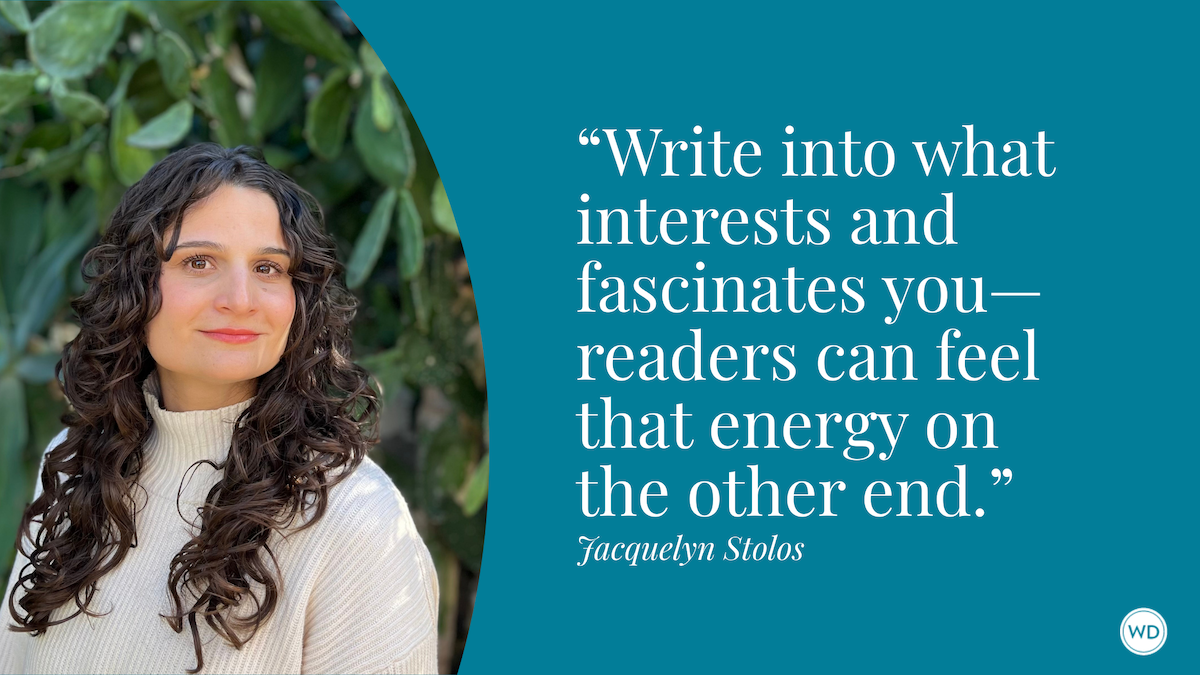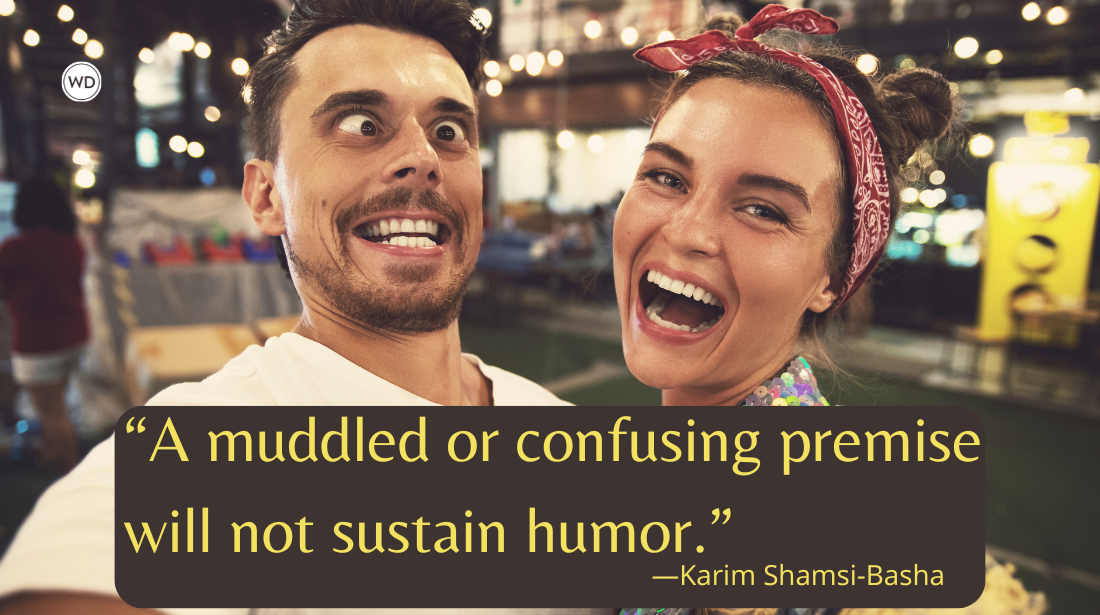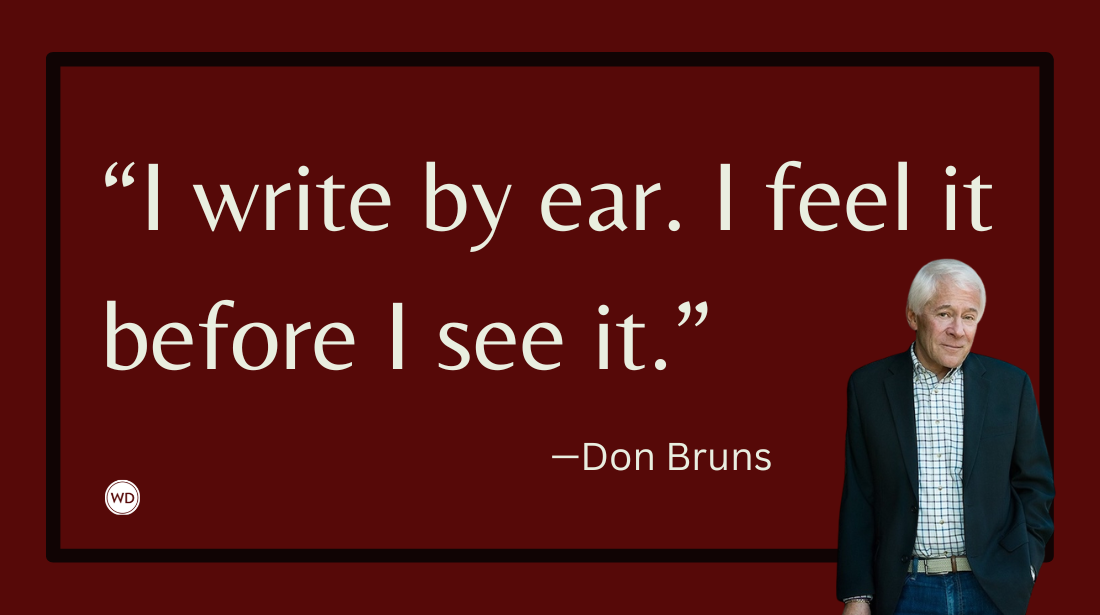How to Turn Elements of Your Novel Into a Masterpiece
Get too focused on any one instrument at play in your story, and you may lose sight of the harmony inherent in truly great fiction. Here’s how to compose the elements of your novel into a masterpiece.
As an author and writing coach, I’m always searching for new ways to understand the novel form. Recently while standing with my drums, cymbals and bells in the back row of the orchestra I play in, it struck me that music, specifically the symphony form, is an apt analogy for the interplay of harmonizing elements that must come together in the crafting of a novel.
Some symphonies are crowd-pleasers: Beethoven’s Fifth, Dvorak’s Ninth (“The New World”), Berlioz’s “Symphonie Fantastique.” And some require a bit more effort to get in touch with: Ives’ Fourth and Mahler’s Seventh, perhaps.
Order a copy of Elizabeth Sims's You've Got a Book in You: A Stress-Free Guide to Writing the Book of Your Dreams.
Amazon
[WD uses affiliate links.]
It’s the same way with novels, which is why my local library buys 12 copies each of the latest bodice-rippers but carries next to nothing by the German existentialists.
The vast instrumental sweep of a symphony exists purely to engage the listener’s emotions, to give pleasure, to entertain, to provoke, to challenge, perhaps to tell a story in the most abstract of terms. To achieve this, every composer writes as dramatic a score as possible, full of conflict, interplay, development and transformation. The process is as important as the tools.
Given that we, as novelists, must also engage our readers’ emotions first and foremost, we can learn much from the symphonic form. And we can learn even more from the deep, rich process of composing. Because I think too often writers get fragmented by considering the elements of fiction individually: theme, setting, character, dialogue and so forth. We can get so enamored by a slick premise or an exotic setting that we forget that a successful novel, like a great symphony, is vastly more than the sum of its parts; it’s how they come together in harmony.
Here’s how to orchestrate all the instruments, melodies and dynamics at work—the elements of your novel—like a master composer.
Theme: Elements of Your Novel’s Melody
Theme is the seed from which a symphony grows. The most compelling symphonies begin with a basic, uncluttered melody, which is then developed, repeated, explicated, obscured, revealed, torn to bits, resurrected. A major symphony can feature several themes, which play together and transform one another before resolving. The best composers can make incredible music out of small, humble melodies, and they do it by bringing theme to bear on all the other elements of the symphony. This is a terrific lesson for authors, because theme is also the defining element of the novel.
For instance, two themes Harper Lee worked into To Kill a Mockingbird are good vs. evil and one brave individual can make a difference. Lee developed these themes individually and together: We see that the good intentions of the townspeople can’t overcome the evil of a few determined individuals, and that someone who is brave enough to act is needed. Enter Atticus Finch; enter Boo Radley, the mockingbird. Furthermore, Lee developed her themes in conjunction with her characters and setting: an impoverished white family, an honorable black man caught in the wrong place at the wrong time, the Jim Crow South.
How can you take your theme to symphonic levels?
- Put serious thought into themes from the start. Only when you have a firm grasp on what your themes are can you powerfully compose the harmonies around them.
Simple is best when it comes to theme. Why? Because a simple theme can be expanded and ornamented, but a complex theme is difficult to simplify without destroying it. The power of love is a terrific simple theme that can take you from zero to Alpha Centauri, while a person who has been abused will never truly love unless she gets lots of counseling isn’t likely to be much of a springboard beyond itself.
- Let theme grow and develop with your characters.The power of love, being pure and easy to understand, can work in tandem with many other themes. For an example, let’s choose life is random and unfair.
Now, if you want to start with a bang, you could put a couple of honeymooners on a plane and make it crash. However, if you start with an attractive businessman who exchanges exasperated glances with a beautiful actress in the security line at the airport, then they find themselves in the coffee line together and have instant chemistry (the power of love emerges, a small but thrilling melody), and suddenly he proposes on the spot, and on impulse she accepts because she’s on the rebound (complexity builds), and they board the plane and plan their life together, lost in each other’s eyes—and then the plane falls out of the sky … now you’ve got something. You’ve established and intensified your power of love theme before adding the second theme that life is random and unfair. From there you can get into obstacles overcome, lessons learned, beauty discovered.
Let’s say the couple is found alive in the fiery wreckage but they are permanently disfigured—her face is gravely damaged and he’s lost his hands. What variations you can play! Readers with romantic streaks will want the couple’s love to grow after this catastrophe, to be found to be real, forged on the anvil of adversity. You could do this, and you could further test their love by inflicting yet more misfortune on them: a reconstructive surgery gone wrong, a stillborn child. In consciously making theme work on character, when your characters then respond to those situations, you can make character work on theme. (Love is rejected, only to be found again; love is shown to be less powerful than fear; one character’s idea of love differs from another’s, etc.)
- Let theme drive plot. In my novel The Extra, I wanted dogs to be symbolically tied to my themes, and I wanted to have fun doing it. I constructed a subplot where a prize-winning beagle stud goes missing and a detective reluctantly agrees to find it. Beyond that, I put in references to dogs throughout the novel: It’s sweltering hot (“the dog days”); in the night skies, Sirius, the dog star, is rising; the protagonist’s child wants a dog and goes to some lengths to get one; a feral pack of canines roams the city; and so on. These dogs come together sooner or later (for instance, the missing stud is found to have joined the feral pack) so that the big themes harmonize with the small, symbolic ones: Tenacity and fatal secrecy are both further illustrated by the dog elements.
- Elevate your story by adding thematic details to your settings. Let’s say one of your themes is abandonment, and one of your settings is a pool hall. You could describe the pool hall as shunned by polite society; it could be populated by derelicts; it could be in a part of town forgotten by the urban redevelopment projects. Themes can also interact ironically with your settings; for example, the theme of abandonment can be brought to a luxury condo in Honolulu—far from being warm, this dwelling might be cold and sterile, abandoned by human feeling.
Your Ensemble: A Stage Full of Voices
A great composer, in writing a symphony, will be sure to differentiate between the voices of the ensemble. Think of the whole orchestra playing the exact same scale, all together, slowly—it might sound pleasant enough, but it will also sound bland.
The act of highlighting different instruments lets the composer create the ultimate in musical riches: conflict. A composer will write solos for individual voices, bringing them to bear on the themes and variations of the sonic material: the plangent cello, the vainglorious trumpet, the clashing cymbals, the luminous French horn, the piercing piccolo. The instruments play duets, trios, they chase one another in scherzos, they mock one another in rondos, they fight one another in fugues.
Particularly noteworthy ensemble-cast novels are Ernest Hemingway’s The Sun Also Rises, Muriel Spark’s The Girls of Slender Means, Katherine Anne Porter’s Ship of Fools and James Ellroy’s L.A. Confidential. In these books the authors establish their characters rapidly and distinctly, give them star turns, and let group dynamics form alliances, then shift, destroy and recreate them.
- Listen to your characters. Treat your ensemble of characters as if it has the massive range of an orchestra. Listen to their voices with your deepest self as you write; open your core to them. Go on and get a little metaphysical! Just as composers can be inspired by the instruments at their disposal, so it can be with your characters and you.
- Give them solos. An easy way to highlight and develop a character—and leave him open for conflict with others—is to give him periodic solo passages. Letting him go off on his own could be as simple as a short passage of inner monologue or as complex as a subplot.
Let’s say we want to explore how gutsy our maimed businessman is. He could decide to pursue competitive sports, or to go on a spiritual quest into the wilderness. Perhaps he takes along a hired nursing aide, and what began as a solo turns into a duet. Perhaps the aide turns out to be a con artist or a maniac or an inventor who, gazing at a thunderstorm one afternoon during his own solo turn, makes a mental breakthrough that results in a partnership in which he and the businessman develop prosthetic hands the likes of which the world has never seen.
- Pass the spotlight. A literal, and perfectly effective, way to switch solos from one character to the next is to shift the point of view. You can do this either by writing separate sections from different characters’ POVs, as Kathryn Stockett did in The Help, or by using an omniscient POV and concentrating on individual characters from time to time (action scenes are great for passing the spotlight). Either way, this technique can generate wonderful tension.
If you’re employing the protagonist’s first-person POV exclusively, try bringing other characters in and out of your hero’s life in high relief. For instance, to give a murder suspect a solo, you can have your detective protagonist interview her, drawing out information. While doing so he observes her intensely, from personal presentation to vocabulary to body language. He raises questions, draws conclusions and prepares a plan of action.
Do this, and you will immediately see new ways your characters can harmonize, clash and crescendo.
Tempo, Dynamics & Mood: Powerful Tools
Good symphonic composers will use the full dynamic range of the ensemble, from one lone small voice—say, an oboe introducing a mournful melody from the obscure center of the orchestra—to the full ensemble in maximum fortissimo, detonating chords in a rapid finale.
When an entire orchestra plays a passage very softly, suspense builds. We know the musicians have the power to blast us out of our seats, yet there they are, whispering to us, beckoning slowly. They know what’s coming, but we don’t, and we sit spellbound with the tense joy of anticipation.
Some thriller authors are masters at varying their dynamics and tempo to heart-clutching effect. John D. MacDonald’s Cape Fear (formerly titled The Executioners), for instance, cranks the volume up and down, alternating between scary and reassuring, between fast and slow action, while swinging the variances wider and wider, as we helplessly, masochistically, wait for the final payoff.
- Be overt. Write a storm scene followed by a quiet love scene, followed by a messenger with devastating news, followed by a winning lottery ticket. An action sequence like a car chase can certainly represent a dynamic shift, but so can a silent multimillion-dollar museum heist.
- Change keys. Generally speaking, major keys furnish harmony, a mood of communion or playfulness, and minor keys challenge harmony with a darker atmosphere. Consider the first sentence of Anita Brookner’s quiet, Man Booker Prize–winning novel Hotel du Lac: “From the window all that could be seen was a receding area of grey.” I’d certainly call that an opening in a minor key. Brookner exploits and expands that atmosphere in electron-microscope detail, so that we get thirsty for some major-key relief, which comes soon enough in the form of the subtle yet needle-sharp wit the author is loved for.
A good simple way to shift atmosphere is to use description to foretell what is to come. Something like this:
We laughed and hugged, relief flooding us like cool water. A minute later, however, a large, fast-moving shadow passed overhead. “What the hell was that?” Philip said. “All the birds are supposed to be dead.”
- Use the small stuff. A small but effective atmosphere-changing tool is sentence structure: Short, blunt sentences on the heels of a long, flowing passage change the rhythm, the feel. Another is dialogue: Imagine a conversation between a person who is angry and a person who is not. Right away you can see how their vocabulary and diction can establish suspense, develop a scene and lead to action.
Your Finale: Emotion Amplified
Over and over, I counsel aspiring novelists to take their time writing their climax and wrap-up. I’m reminded here of a quotation from Emerson: “Adopt the pace of nature: Her secret is patience.” Be like top composers and authors and don’t rush your payoffs. That doesn’t mean to make your climactic scenes slow; it means to give them your full attention. Don’t hurry the reader through them.
An audience will instinctively appreciate any sort of resolution. But they will feel it deeply and emotionally only if they are given disharmony and discordance first. The contrast provides context, and this makes a huge difference.
So, as you build to the end, take away your readers’ soft bed and let them sleep on rocks for a night or two. They will positively kiss their pillows once you take them home again.
The world offers us countless ways to stimulate our creativity as novelists. I believe that the metaphor of music is largely untapped by fiction writers, and I think we’ve just scratched the surface of a lode of riches here. Try some of these ideas, and then dig into them in your own way.
Do a good job, and you’ll get a standing ovation—and play to a packed house next time.
Elizabeth Sims is the bestselling author of seven popular novels in two series, including The Rita Farmer Mysteries and The Lillian Byrd Crime series. She's also the author of the excellent resource for writers, You've Got a Book in You: A Stress-Free Guide to Writing the Book of Your Dreams, published by Writer's Digest Books.









